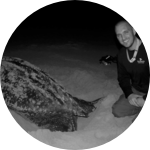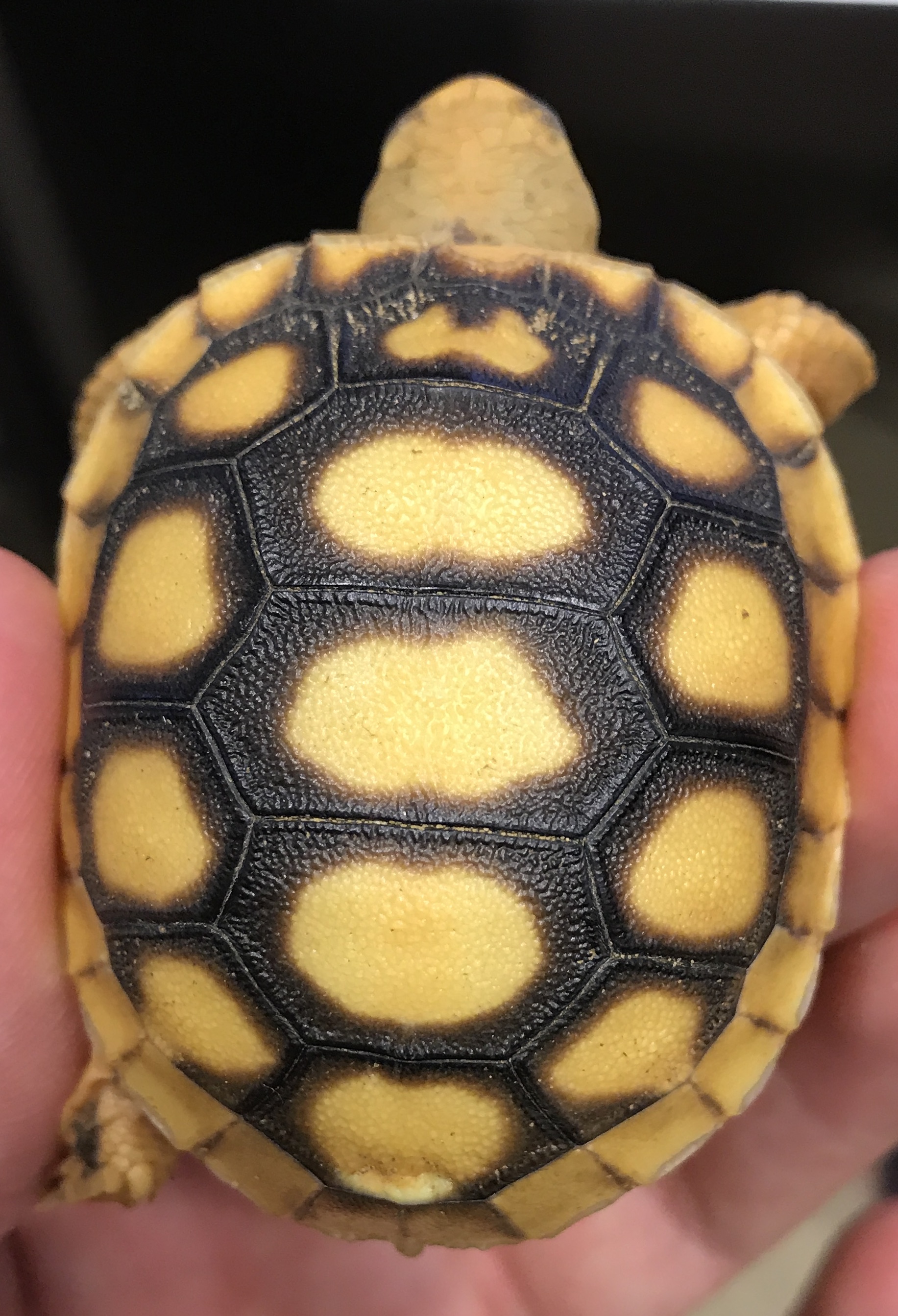About This Project
Low fecundity has been reported for many gopher tortoise (Gopherus polyphemus) aggregations in south Florida, implying an unsustainable population structure. We will conduct a comprehensive health assessment on a previously unstudied group of gopher tortoises in south Florida, to determine baseline demographic and epidemiology parameters, and to help explain fecundity differences in ecologically and geographically similar aggregations.
Ask the Scientists
Join The DiscussionWhat is the context of this research?
Despite seemingly healthy adult gopher tortoise populations in many areas of south Florida, low fecundity has been observed those inhabiting fragmented habitats, demonstrated by a lack of nests within active burrows and a lack of juveniles and sub-adults. This top-heavy demographic structure implies an unsustainable population. Assessment of the health and demographic structure of groups of tortoises living in fragmented habitats will generate data to help explain fecundity differences observed in geographically and ecologically similar sites. The health data provided by this project will provide insight on the reproductive success of two aggregations, that can then be compared to other aggregations in fragmented habitats.
What is the significance of this project?
The gopher tortoise is a keystone species that is declining throughout its range due to habitat loss and fragmentation, human activities, and disease. It is federally listed in the western portion of its range, state-listed in Florida, and currently a candidate for federal listing in the eastern portion of its range.
Lack of knowledge about infectious diseases within wild populations, the impact of health status on relocation or reproduction of species, and disease impacts to long-term population viability creates a major dilemmacreates a major dilemma for wildlife biologists, conservationists, and public policy makers. This project will contribute vital information on the health, demography, ecology, and behavior of this vulnerable species toward the southern end of its range.
What are the goals of the project?
The goal of this project is to add a sampling site and up to 50 more tortoises to an ongoing study, in order to conduct demographic surveillance and health assessment on free-ranging gopher tortoises in south Florida.
To evaluate health, we will conduct physical exams and collect biological samples, which we will analyze for pathogens including Mycoplasma spp., Ranavirus, and Herpesvirus, using PCR and serology. We will also survey for external and internal (gastrointestinal) parasites.
Demographic data collected (location, size, sex) will allow us to create a site-specific 'burrow map', determine population structure, and infer fecundity.
These data will be compared to data already collected for gopher tortoises inhabiting another local site.
Budget
We received external funding from the Association of Reptilian and Amphibian Veterinarians Research & Conservation Grant in 2018, which has funded demographic and health analysis of 54 tortoises to date. Thus, we already have many supplies to cover sample collection and molecular diagnostics. With the addition of the budget items listed here we will be able to include an additional sampling site, and will be fully equipped to perform a comprehensive health assessment of up to 30 additional gopher tortoises. Thus, the requested funds would significantly increase the impact of the research since we will be able to compare the health and fecundity of two geographically and ecologically similar groups of tortoises.
Endorsed by
 Project Timeline
Project Timeline
We will begin capturing tortoises for sample and data collection during spring-summer 2019 and plan to have all samples collected by October 2019.
We will begin analyzing samples during summer 2019, and will generate a full suite of health and demographic data by spring 2020.
We expect to generate summarized results for this project by spring 2020, and plan to submit our findings for publication by summer 2020.
Our progress will be continuously shared and updated with funding backers.
Jun 04, 2019
Project Launched
Jul 01, 2019
Begin sharing project progress and findings with Experiment backers via Lab Notes, emails, and photos/videos.
Oct 01, 2019
Capture up to 50 tortoises and collect samples (blood, nasal swabs, oral and cloacal swabs, feces) and data (size, body condition, sex).
Nov 30, 2019
Analyze samples for health data including complete blood count, plasma protein electrophoresis, and fecal flotation analysis.
Jan 31, 2020
Analyze samples for pathogens using molecular diagnostics. Targeted pathogens include Mycoplasma spp., Ranavirus, Herpesvirus, and gastrointestinal parasites.
Meet the Team
Affiliates
Annie Page-Karjian
I am an Assistant Research Professor and Clinical Veterinarian at Florida Atlantic University's Harbor Branch Oceanographic Institute. Additionally, I am the Clinical Veterinarian for the Harbor Branch Marine Mammal Stranding, Health & Rehabilitation program, provide veterinary services for the Comparative Medicine program within the FAU Division of Research, and am a member of the FAU Institutional Animal Care and Use Committee.
My major research interests include the epidemiology, pathogenesis, eco-immunology, and ecology of infectious diseases and neoplasia of marine mammals and turtles. Throughout the course of my career, I have developed expertise in wildlife medicine and rehabilitation, molecular diagnostics, disease ecology, and veterinary pathology, and has covered topics such as conservation biology, environmental and public health, microbiology, immunology, toxicology, and genomics.
Justin Perrault
I currently serve as the Director of Research at Loggerhead Marinelife Center, and am an Adjunct Scientist at Mote Marine Laboratory, and an Affiliate Scientist/Scholar at Florida Atlantic University. I have a BS in Marine Biology from UNC-Wilmington (2006) and a PhD in Integrative Biology from Florida Atlantic University (2013). I also completed a Postdoctoral Research Fellowship with Mote Marine Laboratory (2013–2015), where I managed their Sea Turtle Conservation and Research Program Nighttime Tagging Program. Before beginning my role at Loggerhead Marinelife Center, I was a Visiting Assistant Professor at the University of South Florida from 2015–2016. My research interests lie in marine animal health and toxicology. I have 13 years of experience working with sea turtles and have published 25 papers on a wide variety of topics dealing with red tide, toxicology, and marine organismal health. I was an invited speaker and panel member for the Sea Turtles and Contaminants Workshop in 2010 for the Environmental Contaminants and Sea Turtles Workshop at the International Sea Turtle Symposium in 2019.
Additional Information

Literature Cited:
1. Diemer-Barish JE, Wendland LD, Kiltie RA, et al. 2010. Effects of mycoplasmal upper respiratory tract disease on morbidity and mortality of gopher tortoises in northern and central Florida. J Wildl Dis 46: 695–705.
2. Eisenberg J. 1983. The gopher tortoise as a keystone species. In: Bryant RJ and Franz R (eds.), The gopher tortoise: A keystone species, pp. 1-4. Proc. 4th Ann Mtg Gopher Tortoise Council. Florida State Mus, Gainesville.
3. U.S. Fish and Wildlife Service. 2011. Endangered and Threatened Wildlife and Plants; 12-Month Finding on a Petition To List the Gopher Tortoise as Threatened in the Eastern Portion of Its Range; Final Rule.
Project Backers
- 36Backers
- 100%Funded
- $2,416Total Donations
- $67.11Average Donation



